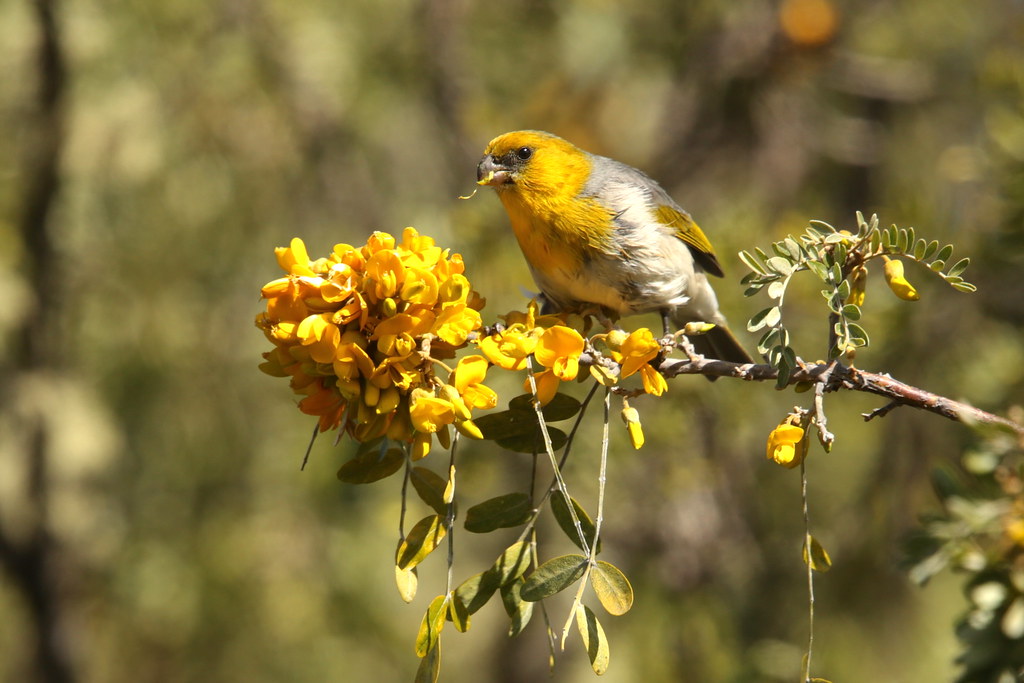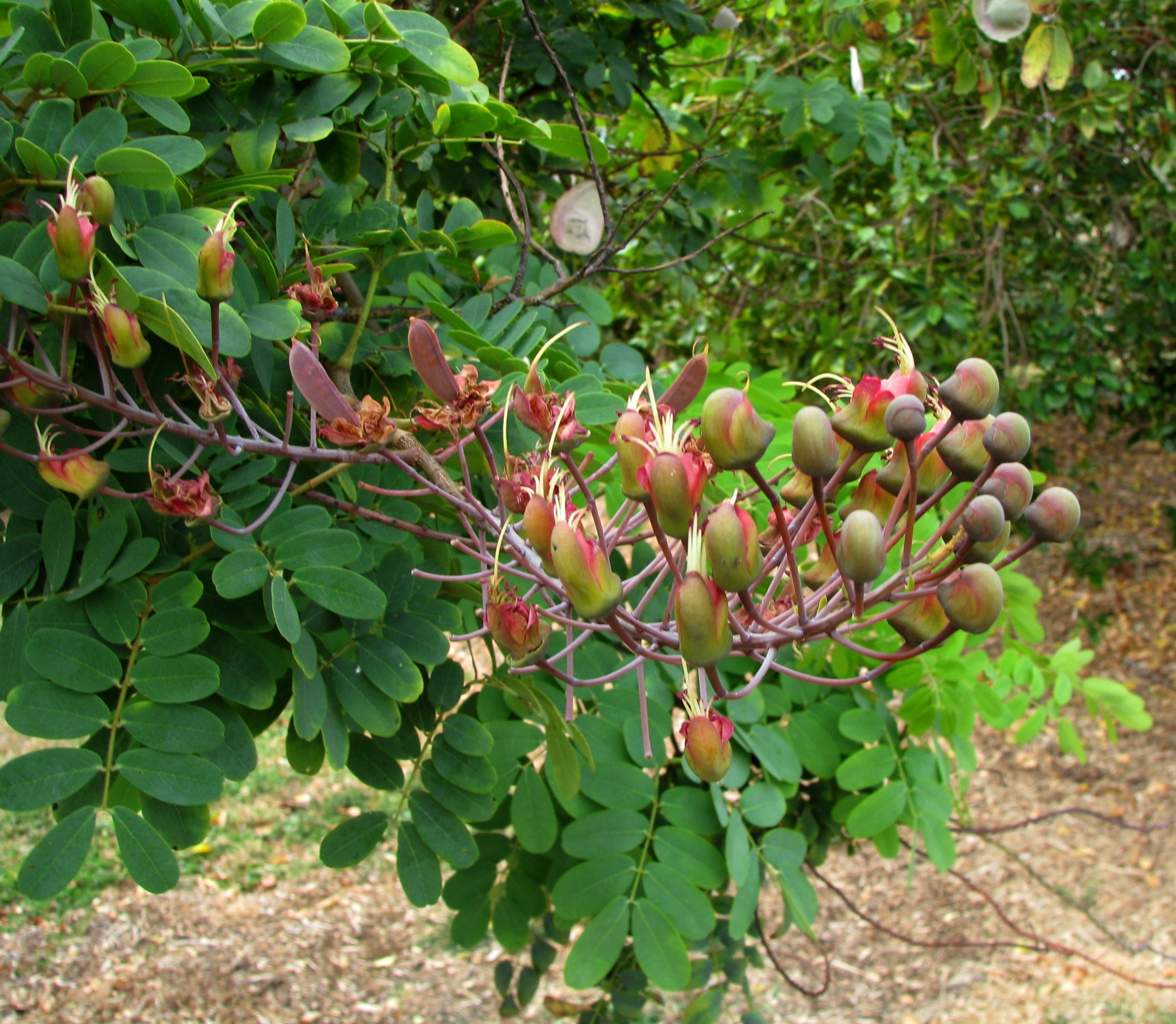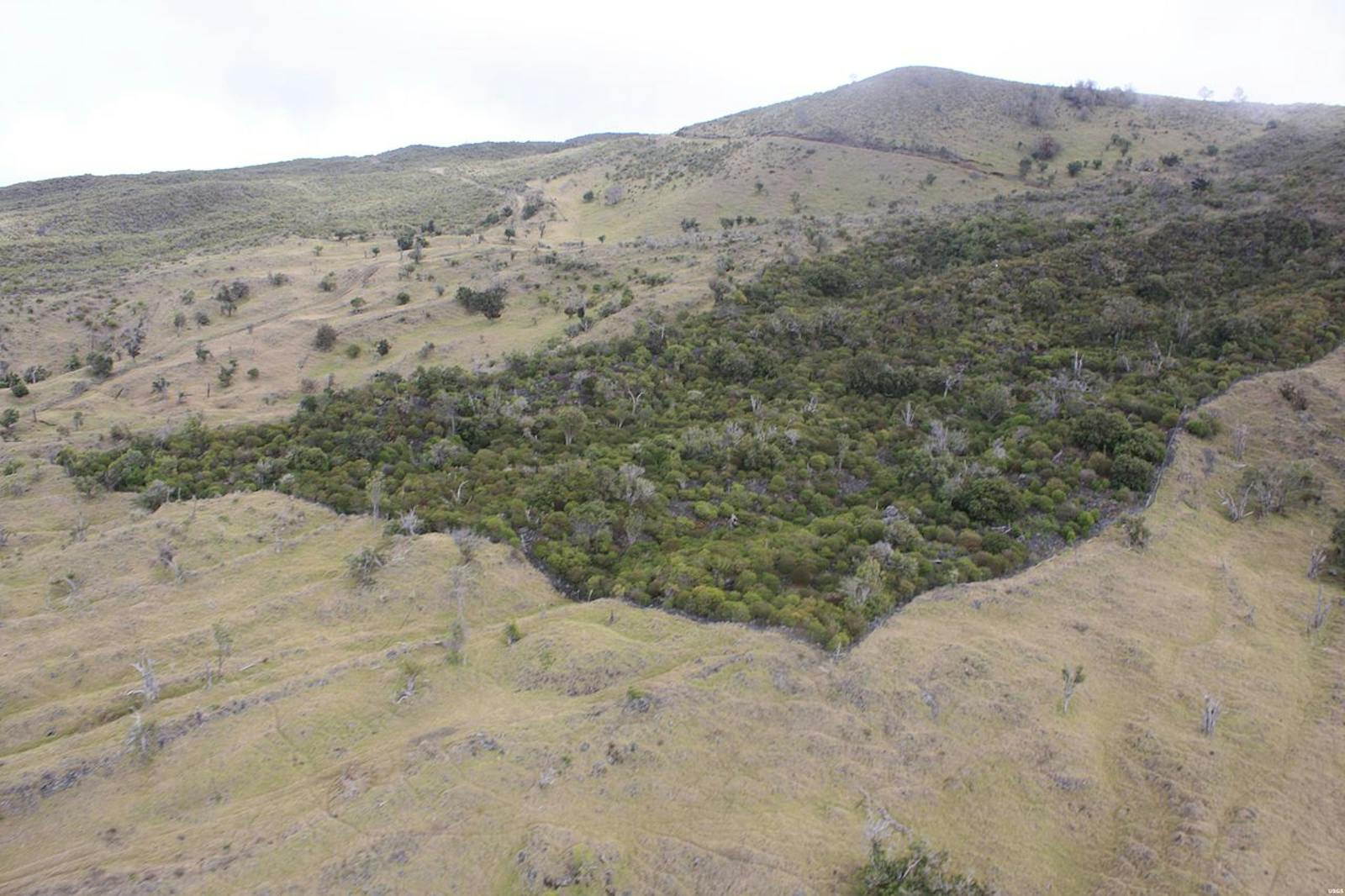Hawai'I Tropical Dry Forests
The ecoregion’s land area is provided in units of 1,000 hectares. The conservation target is the Global Safety Net (GSN1) area for the given ecoregion. The protection level indicates the percentage of the GSN goal that is currently protected on a scale of 0-10. N/A means data is not available at this time.
Bioregion: Hawai’i Tropical Islands (OC11)
Realm: Oceania
Ecoregion Size (1000 ha):
665
Ecoregion ID:
636
Conservation Target:
40%
Protection Level:
4
States: United States
The leeward side of the main islands of Hawai’i are drier as the central ranges and large volcanoes capture much of the rain brought by the trade winds. Here tropical dry forests adapted to drier climes covered the foothills and lowlands and offshore islets. Hawai’i’s dry forests are home to spectacular flowering trees, such as the Moloka’i tree cotton, Kokia cookei, and the unique palila bird found only on the ramparts of Maua Kea and Mauna Loa volcanoes.

The flagship species of the Hawai'I Tropical Dry Forests ecoregion is the palila bird. Image credit: Aaron Maizlish, Creative Commons
Hawai’ian dry forests are shorter in stature than wetter forests and many of the plants have waxy-leaves and other adaptations to survive long dry spells. The forests experience a pronounced dry season from April to October, with rainy season precipitation ranging from 25 to 125 cm. The forests are rich in tree species. There are 109 tree species in 29 families, with 90% of all species endemic, 10% indigenous, and 37% single-island endemics. Important tree genera include Acacia, Chamaesyce, Metrosideros, Sapindus, Sophora, Pritchardia, Pandanus, Diospyros, Nestegis, Erythrina, and Santalum.
Unique trees include several Hibiscadelphus hibiscus trees, Kokia cookei (Moloka’i tree cotton), Caesalpinia kauaiense, and the sandalwood Santalum paniculatum, and Gouania. Roughly 22% of the native Hawai’ian flora occurs in the dry forests with 90% of the taxa uniquely found within these habitats. Shrubland, grassland, lowland Pritchardia palm forests, and moister transition forest formations also occur.

Kokia cookei. Image credit: David Eickhoff, Creative Commons
The yellow, finch-like palila bird specializes on mamane trees that occur in dry forest shrublands that occur on the foothills of the large volcanoes on the island of Hawai’i. Blackburn’s sphinx moth (Manduca blackburni) is one known endemic insect that relies on its endemic dry forest host tree, aiea or Nothocestrum breviflorum.
The hoary bat, Hawai’i’s only land mammal, occurs in the forests. Endemic dry forest species are often restricted to the dry forests that occur on a single larger island, such as the Moloka’i tree cotton and Kanaloa kahoolawensis, with the Big Island and Kau’I having the highest percent of endemism in plants.

Mezoneuron kavaiense. Image credit: David Eickhoff, Creative Commons
Hawai’ian tropical dry forest is among the most endangered ecoregions on the planet, with estimates of 5% to 8% of natural habitat remaining, and less than 2% of each major island with native dry forest left. Repeated burning and clearing for agriculture since the islands were first settled began the alteration and clearing of the forest, with later development, burning, grazing by domestic and feral livestock, and the invasion of non-native plants greatly impacting the remaining native dry forest.
Introduced plant species, such as African fountain grass, the shrub Lantana camara, Natal red top, molasses grass, and several non-native, planted trees, prevent dry forest regeneration and introduced rats, seed-boring insects, deer, goats, and pigs, as well as recurring fires inhibit regrowth. Forty-five percent of Hawaiian dry forest plant taxa are threatened, constituting 25% of the archipelago’s endangered plant taxa. Several species are known to have gone extinct and with the larger percentage loss on multiple islands it is likely many extinctions have already occurred in multiple taxa.
Several dry forest fragments occur within reserves, including Waimea Canyon and Kokee State Park. Over the last decade, much interest has been generated in protecting and restoring remnant patches by NGOs, community groups, and government. Several restoration research and conservation programs are underway.
The priority conservation actions for the next decade are to: 1) protect and restore the largest fragments of dry forests on each of the major islands, as well as smaller fragments holding priority populations of threatened taxa; 2) continue to support efforts for propagation of threatened plant species with restoration of wild populations in defensible habitat fragments; and 3) where possible, expand restoration efforts to connect isolated fragments in important dry forest landscapes.
Citations
- Mitchell C, C Ogura, DW Meadows, A Kane, L Strommer, S Fretz, D Leonard, A McClung. 2005. Hawaii’s Comprehensive Wildlife Conservation Strategy. Department of Land and Natural Resources. Honolulu, Hawai‘i. 722 pp.
- Mueller-Dombois D, FR Fosberg. 1998. Vegetation of the Tropical Pacific Islands. Springer-Verlag, New York.
- Pau S, TW Gillespie, JP Price. 2009. Natural history, biogeography, and endangerment of Hawaiian dry forest trees. Biodiversity and Conservation 18:3167-3182.



